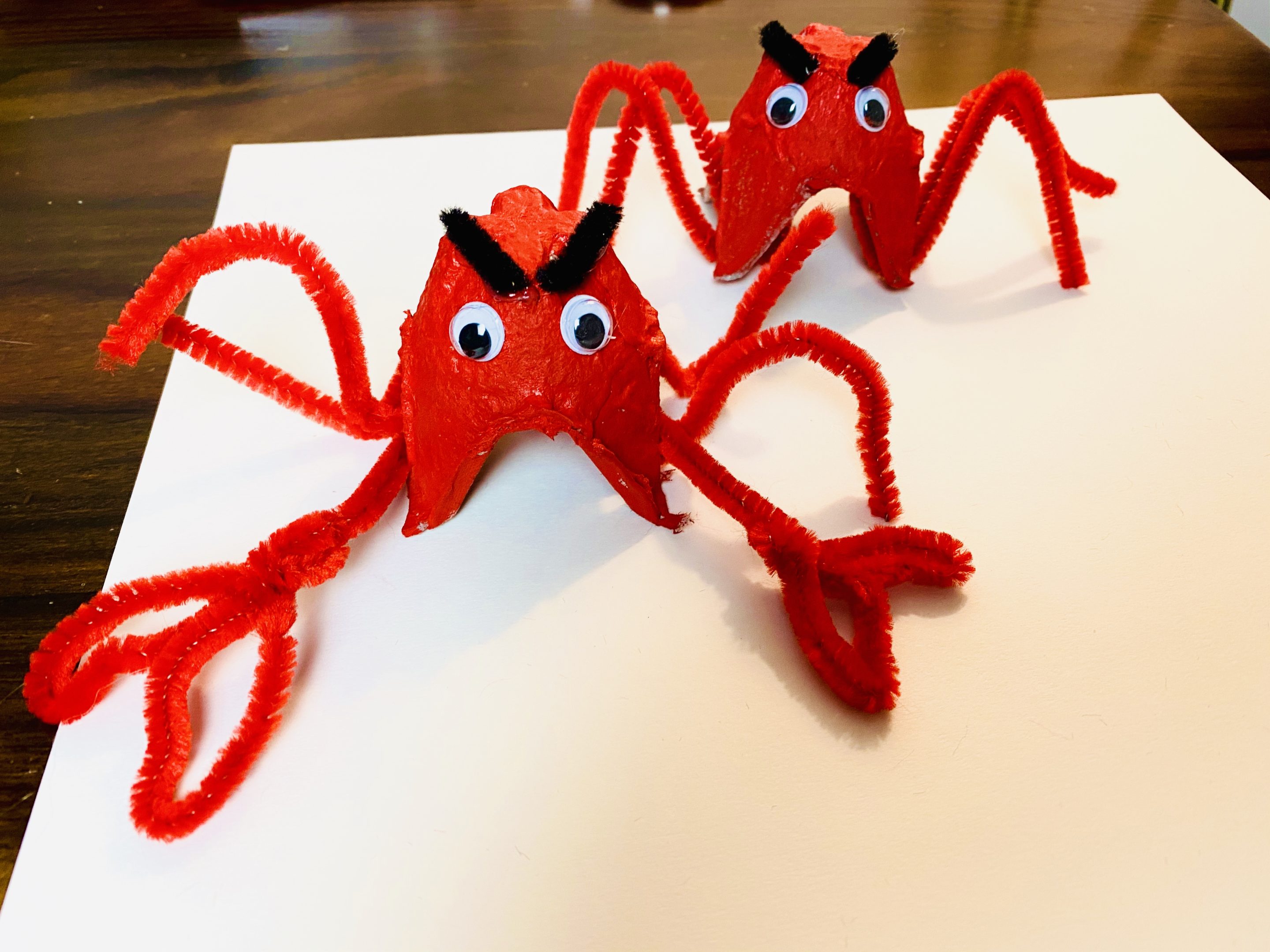Daily At-Home Project: Pipe Cleaner Matching Exercise

Please find below our daily SolBe Family update letter containing helpful resources and exciting projects to explore while we all do our part to stay home during this pandemic. Subscribe here to receive daily updates. April 30, 2020 SolBe Families, The Thursday Good News: Click this link to hear Wes Tank rap “FOX IN SOX” over a Dr. Dre beat. It is the best thing I have heard in some time. This easy project will only take a few minutes to set up and has the potential to keep your child engaged for some time (always depending on their interest…completely ok if they want nothing to do with it or if they want to move on to something else and return to the activity later). In addition to the benefits manipulating the pipe cleaners has for fine motor skills, any matching or memory activity is developmentally beneficial for kids. This is a wonderful activity that will engage kiddos from one to six years old! Project of the Day: Matching Exercise with Pipe Cleaners Staying with our theme for the next few weeks; any matching or sorting activity is deeply rooted in the Montessori Method. You will surely be seeing Maria Montessori’s infamous number matching project here in the next few weeks! Materials Paper Markers/Crayons…even a pen would work! Pipecleaners Step One On a piece of paper or cut out cardboard, draw different lines spread out to mimic the potential shapes the pipe cleaners will be taking. A straight line, a flower outline, zig-zags, whatever inspires you! Step Two, Part A For younger children (9 months-24 months or so) you can manipulate the pipe cleaners and then set everything up so they can focus on the matching principle. They will also enjoy the sensory exploration of the fuzzy/wiry pipe cleaners (a fan-fave!). Step Two, Part B For kiddos (two years to six years), creating the shapes of the pipe cleaners is an exciting part of this activity. Finely tweaking the pipe cleaners to match the shapes they see on the paper helps with abstract thinking development. Step Three Encourage some free-play within the constraints of the activity you have curated. Give them space to explore the materials and see how they instinctively use them! Maybe they will match everything up perfectly, or perhaps they will find another way to use the materials. All ways are good ways! Conclusion As I mentioned above, object-to-picture matching (as we are working on here) has many developmental benefits. Nurturing the child’s ability to think abstractly, develop focus (there is some eye-tracking development happening during these activities), and being creative! Most important direction, as always: HAVE FUN! More resources to follow in the coming days. Feedback and more ideas welcome! Above all, be well and stay healthy! The SolBe Team
Related Articles
Explore our latest insights and resources.

Using Your Voice Effectively: Intentional & Positive Phrases to Use With Your Child

Work and Family: 7 Strategies to Find Balance as a Parent

Understanding and Supporting Early Childhood Mental Health

Understanding and Monitoring Developmental Milestones

The Value of Process-based Learning

The Truth about Parenting: Being a Thriving Parent

The Curious & Creative Classroom

Social-Emotional Learning: Five Competencies and How to Teach Them at Home

Social Emotional Learning Part Five: Teaching Growth Mindset to Inspire Change

Social-Emotional Learning Part Three: Teaching Friendship to Inspire Change

Social Emotional Learning Part Two: Teaching Acceptance to Inspire Change

Social Emotional Learning Part Six: Teaching Empathy to Inspire Change

SEL: Parent Social-Emotional Competence & Well-Being

Social Emotional Learning Part Four: Teaching Respect to Inspire Change

Reflective Learning: 10 Meaningful Questions to Replace “How Was School Today?”

Prosocial Behavior: Strategies to Model, Practice and Praise

Ranking Boston Area Private Schools: Finding The Best Programs For Your Children

Prosocial Behavior: Encouraging Your Child To Practice Gratitude

Play is Work and Work is Play

Preparing a Learning-rich Environment

Nurturing Brain Development During the Window of Opportunity

Exploring Spanish Language Learning Through Play-Based Activities

Early Intervention: Identifying Support for Children Birth to Age Three

Developmental Screening: Acting Early and Advocating for Your Child

Daily at Home Project: Red House – Fun For All Greatest Hits & More

Daily at Home Project: Rainbow Painting and Make Your Own Ice Cream

Daily at Home Project: Pots, Pans, Colors & Rainy Day Brownies!

Daily at Home Project: Lid Matching and Animal Washing Station

Daily at Home Project: Making Music with The Very Noisy Bear

Daily at Home Project: Fine Motor Activities and Let's See Where a Dot Can Take You!

Daily at Home Project: Crazy Art from Silvana Carpio

Daily at Home Project: Baby Treasure Basket and Rocks of Hope

Daily at Home Project: Colander Pipe Cleaner and Pipe Cleaner Bubble Wands

Daily At-Home Project: Mix and Match Faces

Daily At-Home Project: Homemade Binoculars for Little Explorers!

Daily At-Home Project: Gratitude Jar

Daily At Home Project: Veggie Paint Making From Marlo
Stay Updated with SolBe
Join our newsletter for the latest insights and exclusive content on early learning and childcare.






























































